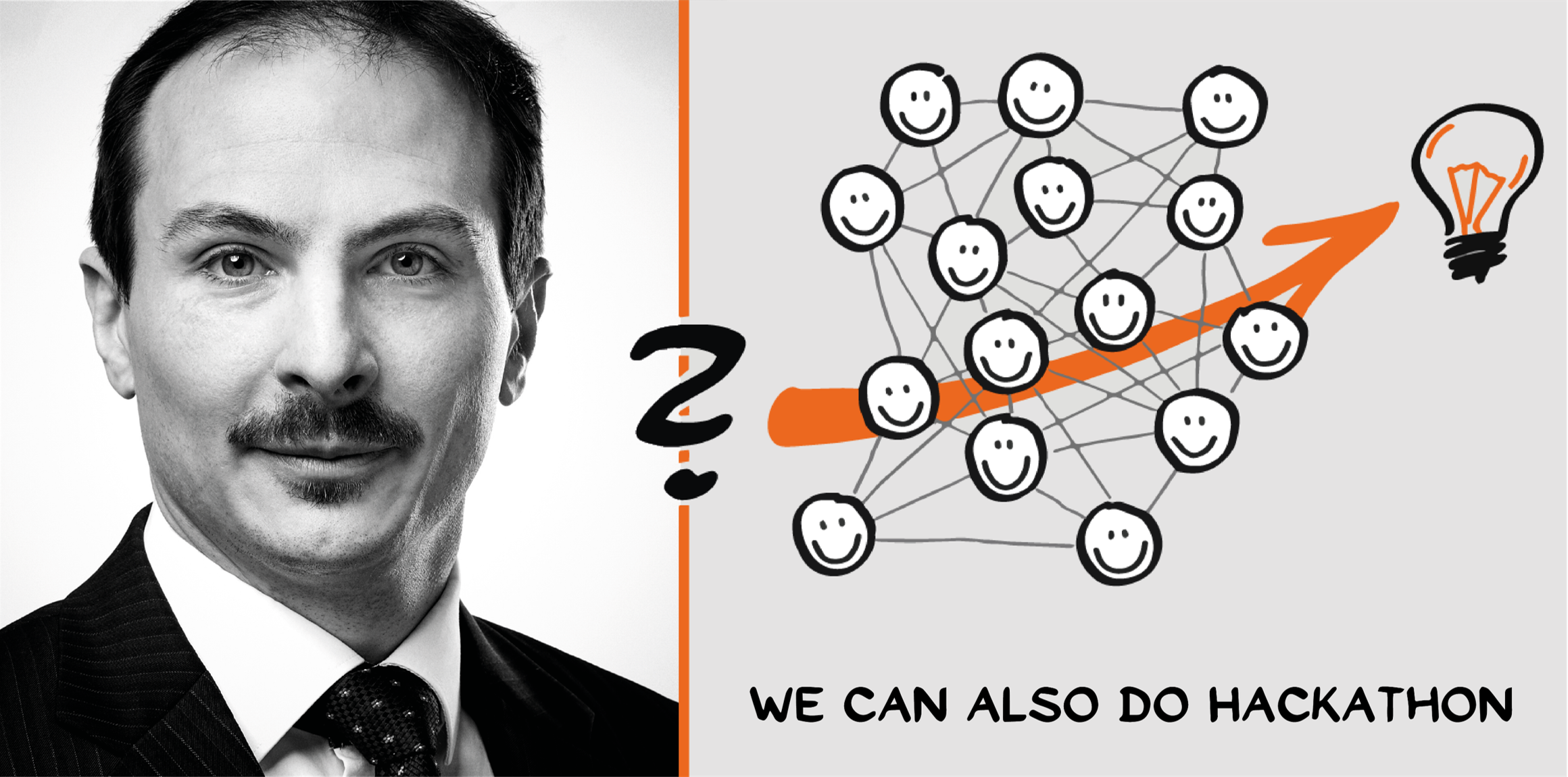
Why nerds and esoterics fear the hackathon

Marcus Rabe, manager of UMS, addressed two exciting topics in one fell swoop: How do neural networks work? And what outstanding results does a hackathon deliver?
Marcus, you've been at UMS for two years now and are always good for a surprise. What connects you to Hult International Business School?
My time at Hult was just great. Great people, lots of fun and always lectures and formats with practitioners. I was so enthusiastic about it that I still enjoy being part of the community - today as an alumnus.
And how did you come up with the idea of getting students at the Hult International Business School in San Francisco and Boston excited about neural networks?
As you know, I've been interested in this topic for a long time and I have a lot of experience with it from my previous job.
The idea was to explain how a neural network works without requiring a degree in mathematics. The whole topic is usually either presented as abstractly as possible in mathematical formula language or proclaimed to be the new world religion with esoteric gobbledygook. But actually the basic principles are so simple that you can calculate them on foot using only basic arithmetic on a flipchart. And that's exactly what I wanted to teach the students.
Well, the symbiosis of flipchart and UMS is well known! And besides, as a part of UMS, the direct translation of inspiring theory into beneficial practice with the help of suitable tools is incredibly important to me.
Wow, that's a strong statement! In this case, who did you empower and how?
In the first step, I explained how neural networks work in a three-hour lecture to 90 live business analytics students. Afterwards, the recording was made available to the other, currently 500 master's students.
And in the second step, I organized a hackathon. 17 teams consisting of 51 students participated. The goal was to give students the opportunity to put what they had learned into practice.
Okay, a lecture, I know that, but what actually is a hackathon?
A hackathon is a kind of sprint competition for creative problem solving. Originally it comes from software development where cross-functional groups consisting of programmers, designers, experts and others face a problem and try to solve it in a given short time. At the end, the best solution is awarded a prize. So you could say that a hackathon is agile working in its purest form.
Are there any framework conditions that are important for it to go well?
For it to work, the most important thing is the lineup of the teams. A mix of diverse skills and experience is fundamental. In addition, it is essential that the teams devote 100 percent of their time to the hackathon and do not work on other things on the side.
There is one person who gives the problem to the team and who must also be approachable throughout. This is because, as is usual in agile working, feedback is regularly sought from the client. The pace of work is extremely high and can, of course, only be sustained for a limited time. That's why most hackathons only last two to three days. So a lot of different output is produced and tested in a very short time - trystorming par excellence.
And this particular hackathon, what was the task and why did you choose this task?
This hackathon was all about learning. Therefore, the goal was not so much the result as the way to get there. It was about students really understanding the inner workings and how neural networks work. And at least I don't really understand things until I do them myself. From there, the task was to program a neural network that can correctly classify images of clothing - as t-shirts, pants, shirts, and so on. You give the neural network any image and it tells you what it is. In practice, one would apply ready-made function blocks from a neural network library - as a black box, so to speak - to such a task. Unfortunately, this is often done without understanding what is really happening inside. Therefore, the task of the hackathon was to program this image classification without using such libraries. In other words, to program the functionality of the library itself and then use it to solve the task. Anyone who manages to do this really understands how a neural network works.
Exciting, what was the result?
Many hours of intensive work, hectoliters of coffee drunk, a weekend fed by pizza, and not to forget a lot of fun...
But seriously - it was all about the learning experience - as I said, the journey was the goal. All participants can now say of themselves that they learned a lot about neural networks.
But of course there were also presentable results. One group managed to correctly classify over 80 percent of previously unknown test images with their code. Judging by the fact that I sometimes have a hard time picking out a shirt and pants correctly even before my first coffee, that's a mature achievement for the network. In addition to this accuracy, however, the teams were also measured on things like the comprehensibility and reusability of their source code - things that are indispensable basic requirements in later working life.
It was insane to see what a bunch of students (none studying computer science, all participants were enrolled in the various business programs) could come up with in just one weekend.
For which issues can you imagine companies organizing hackathons and where do they get suitable participants? I would be rather out of place there, wouldn't I?
You would have been a super addition to any hackathon team - your expertise in buying pizzas and organizing coffee is undeniable.
But seriously, the most important thing is the interdisciplinary composition of the teams. This is the only way to come up with creative solutions in a short time. And of course, all participants have to work fully on the hackathon - there is simply no time for distractions or much sleep, and yet: hackathons are fun!
Hackathons are suitable for many issues, as long as a creative problem solution in a short time is necessary. The important thing here is that really enough freedom is given for creativity and at the same time the customer is available at all times. It is about agile working in the fast lane. If the solution or the solution path is already fixed, this is rather not suitable. But if, in addition to such things as machinelearning, for example, the goal is to develop ideas for entering new markets or sustainability strategies in a very short time, then a hackathon is just the thing.
Awesome! Marcus, thanks so much for the insights! You do realize that you've now raised expectations and you'll get an extra slot at our next Digitalization Excellence for Executives seminar, right?
Are we going to have a Commissioner Krause hackathon then?